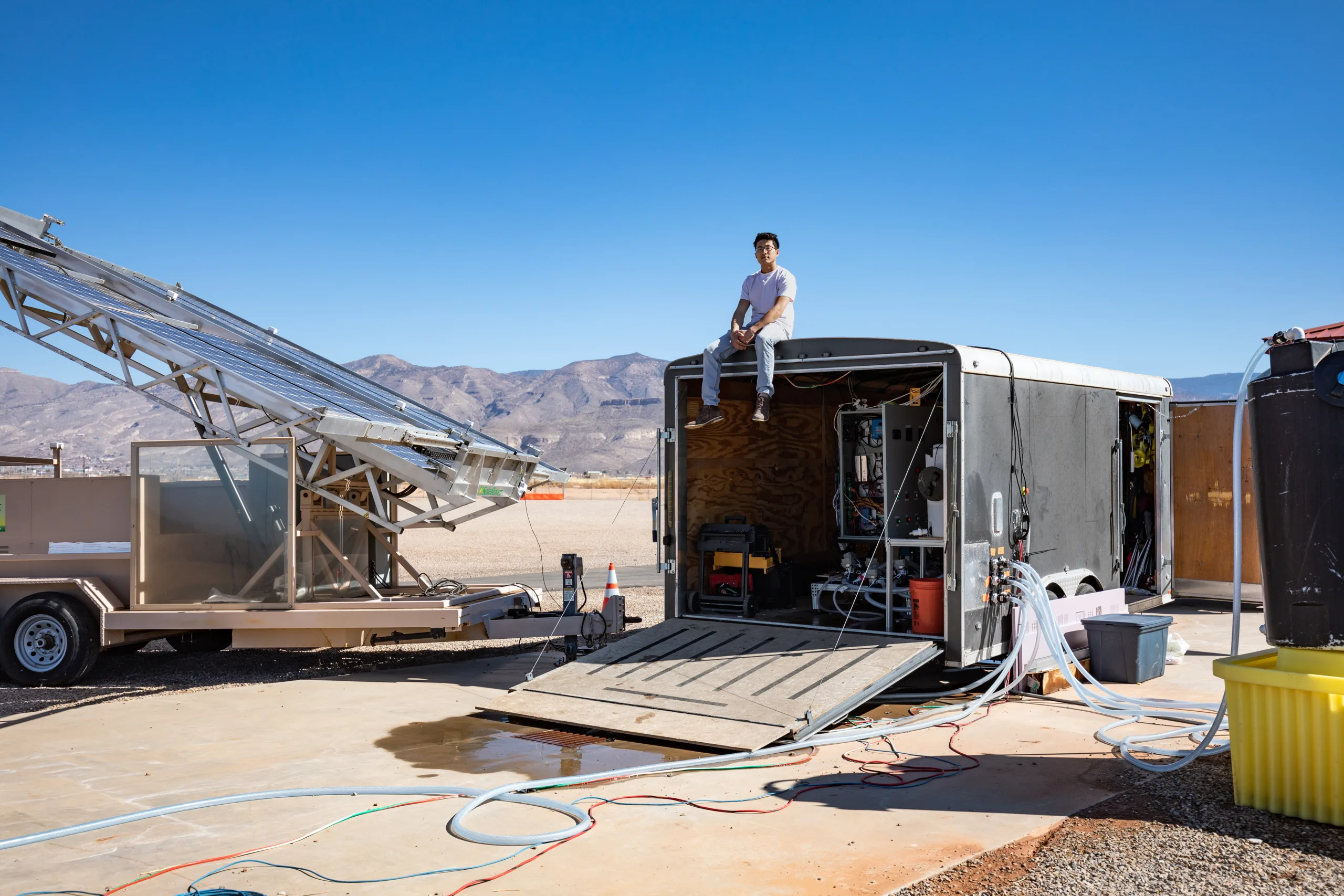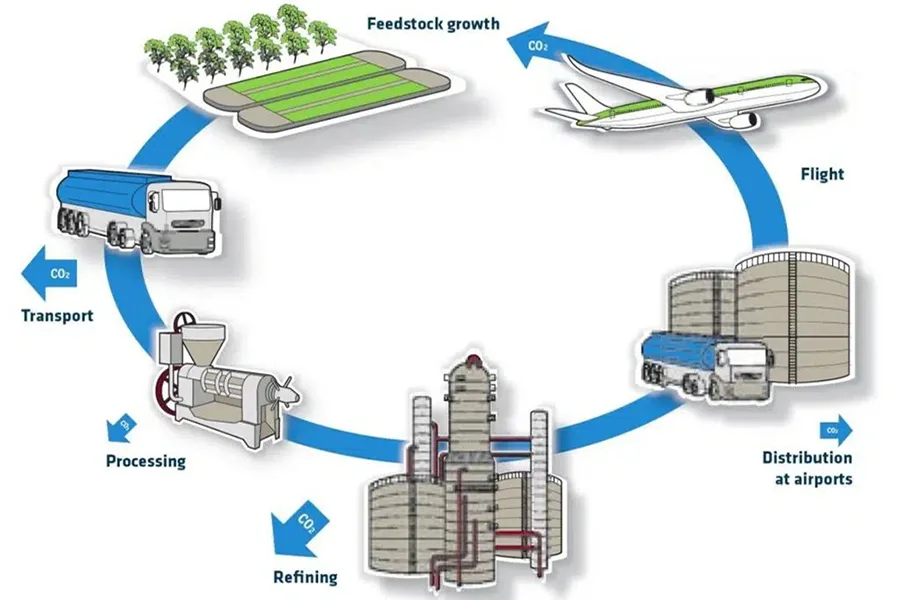Engineers at MIT have developed an innovative desalination system powered by solar energy, designed to adapt to the sun’s intensity throughout the day.
This cutting-edge system efficiently extracts salt from water, adjusting its desalination rate in real-time as solar energy fluctuates. When sunlight is ample, the system boosts its output, and during unexpected cloud cover, it reduces its activity accordingly.
By swiftly responding to changes in solar radiation, this technology maximizes solar energy utilization, ensuring a consistent supply of clean water. Unlike other solar-powered desalination methods that depend on battery storage or additional grid power, the MIT system functions independently without these requirements.
Over a six-month trial period in New Mexico, engineers tested a community-scale prototype using various groundwater sources and weather conditions. Impressively, the system averaged over 94% energy efficiency from its solar panels, producing up to 5,000 liters of water daily, despite unpredictable weather patterns.
“Traditional desalination techniques often rely on stable power sources and battery backups to accommodate renewable fluctuations. Our approach synchronizes power use with solar energy in a more direct and effective manner,” explains Amos Winter, Professor of Mechanical Engineering and Director of the K. Lisa Yang Global Engineering and Research (GEAR) Center at MIT. “Achieving desalination with renewable energy without needing batteries is a significant breakthrough.”
This innovative system primarily targets brackish groundwater—a more saline water source commonly found in underground reservoirs. Given the increasing salinity of freshwater supplies due to climate change, the researchers view brackish water as an underutilized potential drinking water source. They are optimistic that this new renewable, battery-free desalination system can provide affordable drinking water to inland communities lacking direct access to seawater and grid power.
“Most people live far from coastal areas, making seawater desalination impractical. Instead, they depend on groundwater, especially in rural and economically disadvantaged regions. Unfortunately, this groundwater is becoming saltier due to climate change,” emphasizes Jonathan Bessette, an MIT PhD student in mechanical engineering. “This technology could deliver sustainable, cost-effective clean water to underserved regions around the globe.”
Details of this groundbreaking system are published in a recent paper in Nature Water. Co-authors include Bessette, Winter, and staff engineer Shane Pratt.
Pump and Flow: A New Approach
This new technology builds upon a previous design, which sought to desalinate using “flexible batch electrodialysis.” Various traditional methods, such as electrodialysis and reverse osmosis, are used for desalinating brackish groundwater. Reverse osmosis requires pressure to filter out salts, while electrodialysis uses an electric field to extract salt ions through ion-exchange membranes.
Although efforts have been made to power both methods with renewable energy, the challenges have been notably difficult for conventional reverse osmosis systems due to their requirement for steady power levels, which does not coincide with solar energy’s natural variability.
Winter and his team have made significant strides in electrodialysis, focusing on creating a more adaptable “time-variant” system that reacts to renewable energy variations. Their previous design incorporated pumps, ion-exchange membranes, and solar power, with an advanced control system that optimized water flow and voltage to enhance salt removal efficiency.
In practical tests, that system managed to adapt its freshwater output in tandem with solar energy changes. It utilized an impressive 77% of the energy generated by its solar panels, 91% more than typical solar-powered electrodialysis systems.
Nonetheless, the researchers believed they could enhance this further. “Our previous calculations took place every three minutes—a cloud could interrupt our power needs within moments,” says Winter. “At times, we found ourselves needing battery support to compensate for dropped energy because of weather changes.”
Real-Time Solar Adjustment
In their latest innovation, the team aimed to eliminate battery reliance by achieving a remarkable system response time of just fractions of a second. This allows for desalination rate adjustments three to five times per second, perfectly syncing the system with changing sunlight conditions, completely forgoing the need for extra power supplies.
The system’s success lies in a newly devised, simplified control mechanism called “flow-commanded current control.” Bessette and Pratt developed this strategy to adjust both the flow rate and current based on the solar energy output detected, ensuring optimal desalination performance.
“Imagine the sun rapidly changing,” Winter illustrates. “Within moments, we measure solar output—if energy exceeds our current usage, we can increase our flow rate and current to maximize desalination. This process continually fine-tunes our power requirements and solar output, reducing battery needs dramatically.”
The fully automated prototype was engineered for desalinating brackish groundwater sufficient for a community of about 3,000 individuals, tested extensively at the Brackish Groundwater National Desalination Research Facility in Alamogordo, New Mexico. The system exhibited its ability to effectively operate through diverse solar conditions, averaging over 94% solar energy utilization throughout the testing period.
“In comparison to traditional solar desalination designs, we have slashed battery capacity needs by nearly 100%,” Winter adds.
The engineering team intends to pursue further tests and scale up the technology to potentially supply larger communities and municipalities with entirely solar-driven, economical drinking water.
“While this represents a significant advancement, we continuously strive toward developing low-cost and more sustainable desalination solutions,” Bessette states.
“Our ongoing focus is on reliability testing and creating a product line that utilizes renewable energy for desalination in various markets worldwide,” Pratt concurs.
A company based on this innovative technology is set to launch in the coming months.
This research received support from the National Science Foundation, the Julia Burke Foundation, and the MIT Morningside Academy of Design, with additional contributions from Veolia Water Technologies and Solutions and Xylem Goulds.
Photo credit & article inspired by: Massachusetts Institute of Technology



